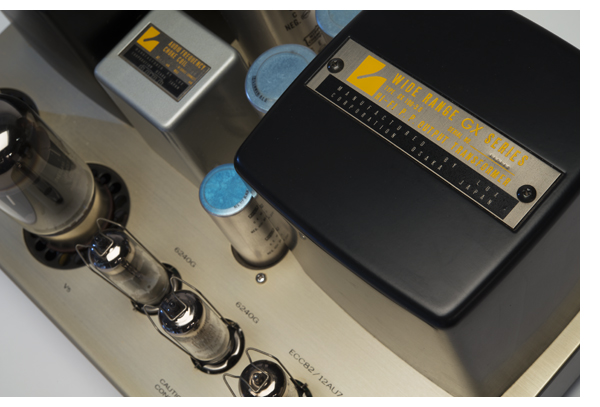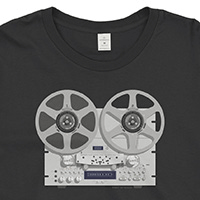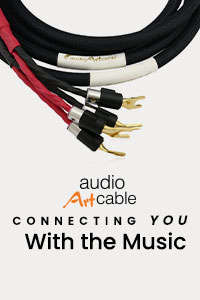Luxman’s Luscious MB-3045 Monoblocks
 The sound of a classic vacuum-tube amplifier always beckons, and a recent trip to Echo Audio in Portland turned up a pair of gorgeous Luxman MB-3045 monoblocks. When Echo owner Kurt Doslu coyly told me to “check out the new arrivals,” he knew I would find the catnip on the shelf. And there they sat, staring back at me.
The sound of a classic vacuum-tube amplifier always beckons, and a recent trip to Echo Audio in Portland turned up a pair of gorgeous Luxman MB-3045 monoblocks. When Echo owner Kurt Doslu coyly told me to “check out the new arrivals,” he knew I would find the catnip on the shelf. And there they sat, staring back at me.
“This is the cleanest pair I’ve seen in a long time,” Doslu laughs. The hook is set and I can’t escape. Clean they are, indeed—and knowing that tube mastermind Tim DeParavicini designed these in his younger years, when he was at Luxman, makes them even more inviting.
The big but—and there’s almost always a big one with all things vintage—is that the 8045G triode output tubes that NEC made specifically for this amplifier are tough (if not impossible) to find. And those who do have the tubes want way too much money for them, as is usually the case with such rare and sought after items. So unless you have a stash of the 8045G tubes yourself, you may have to pass on these particular Luxman monoblocks, should you ever come across a pair in working or restorable order.
 But then Doslu pulls me back in. “These have had the factory modification, so they use KT-88s,” he informs me. Of course, the 6240 driver tubes for the amp are as tough to find as the 8045Gs, but multiple sources reveal that the 6CG7/6FQ7 tube is a suitable replacement.
But then Doslu pulls me back in. “These have had the factory modification, so they use KT-88s,” he informs me. Of course, the 6240 driver tubes for the amp are as tough to find as the 8045Gs, but multiple sources reveal that the 6CG7/6FQ7 tube is a suitable replacement.
You Had Me at Hello
Some say the magic of these amplifiers is in the 8045 tube, which others say is no more than a 6550 with internal jumpers. And there are others still who claim that Luxman’s expertise in winding output transformers is the key to its success with amplification.
Not having heard a pure pair with the original tubes myself, I can’t be sure. But I can tell you that the configuration of this pair is indeed seductive, and I’m sure these lovely monoblocks are more than the sum of their parts and the creative ethos behind them.
 The Luxman MB-3045s are relatively compact, measuring just 8.5 inch deep, 14 inches wide and 6 inches tall. The front panel has only a bright-orange power indicator (the lit vacuum tubes also indicates that the juices are flowing). Around back, the configuration is relatively Spartan: a simple barrier strip for speaker output, with 4-, 8-, and 16-ohm taps, a solitary RCA input jack and a level control, along with a two-prong power cord receptacle. It should be noted that the original power cord supplied with the amps are rather wimpy, so an upgraded chord is a good idea.
The Luxman MB-3045s are relatively compact, measuring just 8.5 inch deep, 14 inches wide and 6 inches tall. The front panel has only a bright-orange power indicator (the lit vacuum tubes also indicates that the juices are flowing). Around back, the configuration is relatively Spartan: a simple barrier strip for speaker output, with 4-, 8-, and 16-ohm taps, a solitary RCA input jack and a level control, along with a two-prong power cord receptacle. It should be noted that the original power cord supplied with the amps are rather wimpy, so an upgraded chord is a good idea.
Built from 1975 to 1978, the MB-3045s feature a caged chassis, with the matching chassis finished in chocolate brown (as in our samples here), or in black. It appears that the black ones are tougher to find, but they don’t look quite as vintage.
Shaking the Cobwebs
Having sat on the shelf at Echo for some time, these amplifiers need a few solid days of playing to reveal their true character. They sound very dark and withdrawn at first run through the MartinLogan Aerius i speakers in my home listening room. However, after about 50 hours, the Luxman monos come to life in a present, palpable way that never disappoints.
Listening to the Tom Waits classic “Jockey Full of Bourbon” reveals a dense musical landscape, with bongos out front and Waits’ signature gravely voice hiding behind the projected plane of the speakers. No matter what your favorite type of vocal recording, these amplifiers portray a tremendous sense of depth and space. While some of the lack of extension and control at the frequency extremes may be a result of this amplifier not being a “pure” example with the original NEC triodes, it still performs admirably and it’s overall tonal character is enticing.
Romping further through multiple tracks of jazz, rock and blues uncovers a slightly loose and somewhat warm character to the MB-3045s. You’ll never mistake these for a Stereo 70, but you’ll also never mistake them for contemporary amplifiers from ARC. Think early PrimaLuna and you’re getting close.
Which brings us to the eternal question that plagues all of us who love vintage tube gear: Do you get the reliable Mazda Miata or do you go for the period-correct Austin-Healey Sprite—which, while more problematic, has the perfect vintage feel?
The $1,800 price tag on this pair is incredibly reasonable, and they’ve had the conversion done, which makes tube matching a lot easier. As far as finding a perfectly clean vintage pair of tube amplifiers goes, I consider myself quite lucky for coming across these. – Jeff Dorgay






